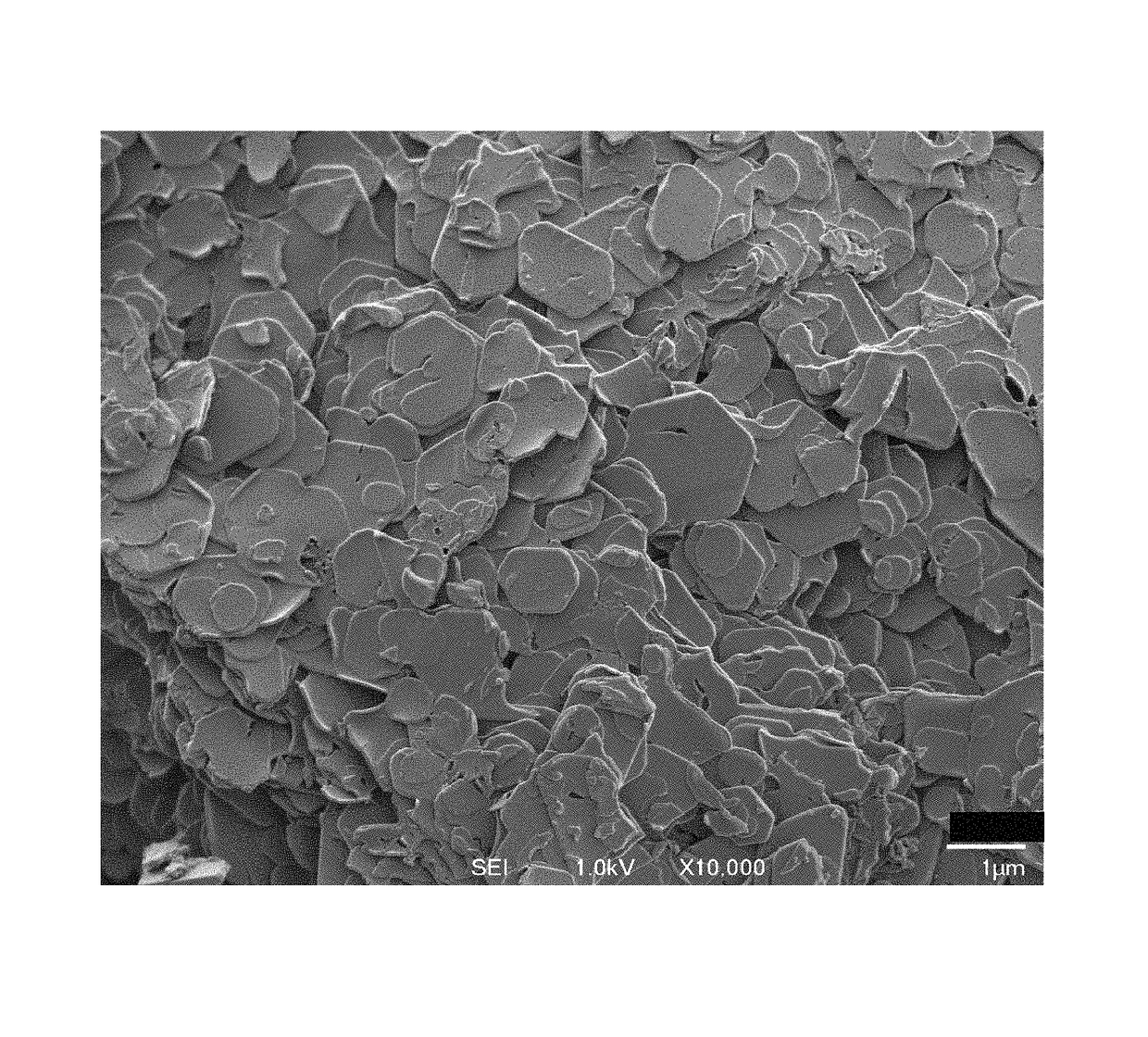High charge density metallophosphate molecular sieves
a molecular sieve and high charge technology, applied in the field of high charge density metallophosphate-based molecular sieves, can solve the problems that the reliance on ethylene glycol solvents for synthesis is not conducive to industrial scal
- Summary
- Abstract
- Description
- Claims
- Application Information
AI Technical Summary
Problems solved by technology
Method used
Image
Examples
example 1
[0043]A Teflon beaker was charged with 120.00 g tetraethylammonium hydroxide (TEAOH, 35%), SACHEM Inc.) and placed under a high speed overhead stirrer. Pre-ground aluminum isopropoxide (13.3% Al, Sigma-Aldrich), 5.79 g, was dissolved in the TEAOH solution. This was followed by the fast dropwise addition of 19.57 g H3PO4 (85.7%). The reaction mixture was diluted with 37.65 g de-ionized water. Separately, a zinc acetate solution was prepared by dissolving 6.26 g Zn(OAc)2*2H2O in 35.00 g de-ionized water. This solution was added in a fast dropwise manner to the reaction mixture with vigorous stirring. Then a solution was prepared by dissolving 1.41 g potassium acetate, KOAc (99.4%), in 25.00 g de-ionized water. This solution was also added fast dropwise to the reaction mixture, resulting in a clear solution. The reaction mixture was distributed among 7 Teflon-lined autoclaves which were digested quiescently at 95, 125, 150 and 175° C. for either 59 or 159 hr or both at autogenous press...
example 2
[0045]A Teflon beaker was charged with 928.44 g of Triethylpropylammonium hydroxide (TEPAOH, 19.7%, SACHEM Inc.) followed by the addition 27.96 g of aluminum tri-sec-butoxide (Sigma Aldrich, 97+%), which were then homogenized with a high speed overhead stirrer to make a clear solution. Then 78.50 g of H3PO4 (85%) was slowly added to the mixture. Separately, 24.91 g of Zn(OAc)2*2H2O was dissolved in 60 g de-ionized water and then was added dropwise to the reaction mixture with vigorous mixing. Similarly, 2.12 g of KCl was dissolved in 10.00 g de-ionized water and added dropwise to the stirring reaction mixture. The reaction mixture was further homogenized until it was a clear solution. A portion of the solution, 1050 g, was placed in a 2-L Teflon-lined PARR reactor and digested quiescently for 92 hours at 175° C. at autogenous pressure. The solid product was isolated by centrifugation, washed with de-ionized water and dried at room temperature. Characterization via powder x-ray diffr...
example 3
[0047]A Teflon beaker was charged with 81.72 g of Diethylmethylpropylammonium hydroxide (DEMPAOH, 20.7%, SACHEM Inc.) followed by the addition of 2.83 g of aluminum-tri-sec-butoxide (97+%), which were then homogenized with a high speed overhead stirrer to make a clear solution. Then 7.96 g of H3PO4 (85%) was slowly added to the mixture as stirring continued. Separately, 2.53 g of Zn(OAc)2*2H2O was dissolved in 8.00 g de-ionized water. This solution was added to the reaction mixture in a dropwise fashion. Next, a solution was prepared by dissolving 0.43 g KCl in 4.00 g de-ionized water. This solution was also added dropwise to the reaction mixture with vigorous stirring. The resulting clear solution was distributed among three Teflon-lined autoclaves that were digested for 48, 72, and 96 hr at 175° C., rotated in a rotisserie oven at autogenous pressure. The products were isolated by centrifugation, washed with de-ionized water, and dried at 100° C. The products were identified as PS...
PUM
| Property | Measurement | Unit |
|---|---|---|
| mole ratio | aaaaa | aaaaa |
| mole ratio | aaaaa | aaaaa |
| mole ratio | aaaaa | aaaaa |
Abstract
Description
Claims
Application Information
 Login to View More
Login to View More - R&D
- Intellectual Property
- Life Sciences
- Materials
- Tech Scout
- Unparalleled Data Quality
- Higher Quality Content
- 60% Fewer Hallucinations
Browse by: Latest US Patents, China's latest patents, Technical Efficacy Thesaurus, Application Domain, Technology Topic, Popular Technical Reports.
© 2025 PatSnap. All rights reserved.Legal|Privacy policy|Modern Slavery Act Transparency Statement|Sitemap|About US| Contact US: help@patsnap.com

